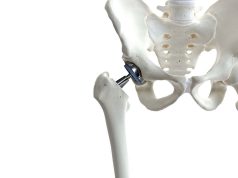ORACLE can be used to show patients how lifestyle changes affect outcomes of interest
WEDNESDAY, May 15, 2019 (HealthDay News) — The Outcomes Reporting App for Clinical and Patient Engagement (ORACLE) tool can predict quality measures following ventral hernia repair (VHR) and facilitate preoperative surgeon-patient discussions, according to a study published online May 2 in the Journal of the American College of Surgeons.
Ivy N. Haskins, M.D., from the Cleveland Clinic Foundation, and colleagues generated and validated predictive models for five quality measures following VHR, including postoperative wound events, estimated length of hospital stay, unplanned 30-day readmission, and the risk for hernia recurrence at one year postoperatively.
Overall, 10,690 patients met the inclusion criteria and had 30-day follow-up data available. The researchers found that based on comparison of the theoretical best to the observed calibration curves, the models had strong predictive strength for each of the five outcomes of interest. This finding was reflected by the Brier score for surgical site infection, surgical site occurrence requiring procedural intervention, and 30-day hospital readmission; the C-index for one-year hernia recurrence; and the R squared value for predicted hospital length of stay.
“Ideally, the ORACLE was developed as a tool to be used in the clinic during the preoperative evaluation of patients considering ventral hernia repair,” Haskins said in a statement. “The point of the tool is really to show patients visually how their outcomes will be affected if, for example, they lose weight or stop smoking, or if the surgeon chooses a specific technique.”
Several authors disclosed financial ties to the pharmaceutical and medical device industries.
Copyright © 2019 HealthDay. All rights reserved.








